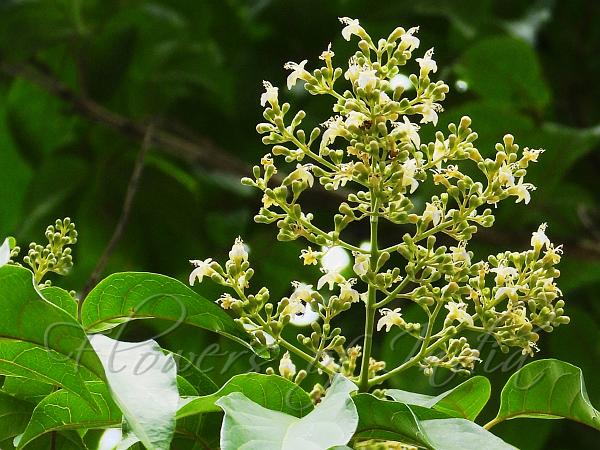|
| Five-Leaf Chaste Tree |
|

|

| File size | 899621 |
| Original date | 6/8/23 10:58 AM |
| Resolution | 3456 x 4608 |
| Flash | Flash did not fire, auto |
| Focal length | 24.3mm |
| Exposure time | 1/400s |
| Aperture | 4.0 |
| Focus Distance | |
| Metering Mode | Multi-segment |
| Camera make | NIKON CORPORATION |
| Camera model | COOLPIX P1000 |
| Sensor type |
|
|
|
|
Photo: |
Botanical name: Vitex quinata Family: Verbenaceae (Verbena family)
Synonyms: Vitex loureiroi, Vitex sumatrana, Vitex undulata
Synonyms: Vitex loureiroi, Vitex sumatrana, Vitex undulata
Five-Leaf Chaste Tree is a tree 4-12 m tall,
evergreen; bark brown. Branchlets are velvet-hairy and glandular when
young, becoming hairless. Leaves are 3-5-foliolate; leaf-stalk 2.5-6
cm; leaflet-stalks 0.5-2 cm; leaflets obovate-elliptic to obovate or
oblong to elliptic, thickly papery, both surfaces shiny, below yellow
glandular, base wedge-shaped, margin entire or sometimes at tip
crenulate toothed, tip tapering, pointed, or blunt; central leaflet
5-20 2.5-8.5 cm. Flowers are borne in panicles at branch-ends, lax,
9-18 cm, densely yellowish brown velvet-hairy. Sepal-cup 2-3 mm,
rudimentarily toothed, densely yellowish brown velvet-hairy, glandular.
Flowers are yellowish, 6-8 mm, 2-lipped, 5-lobed, outside velvet-hairy
and glandular, stamens protruding. Fruiting sepal-cup is flat, fruit
black, obovoid to spherical, about 8 mm in diameter. Five-Leaf Chaste
Tree is found in India, East HImalaya to China and SE Asia, at
altitudes of 200-1700 m. Flowering: May-July.
| Identification credit: M. Sawmliana | Photographed in Aizawl, Mizoram. |
• Is this flower misidentified? If yes,